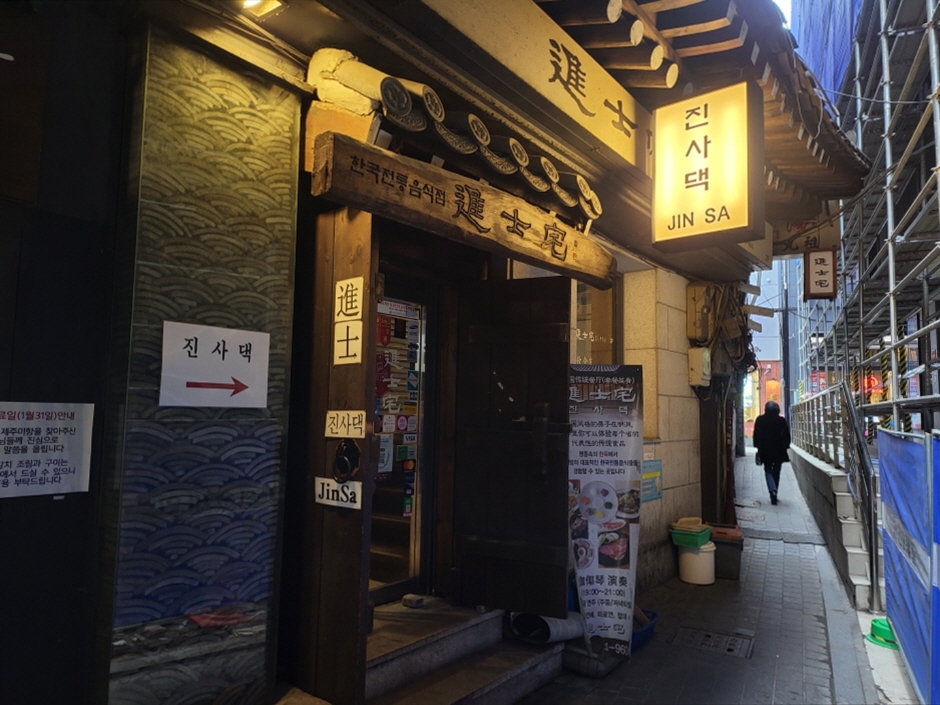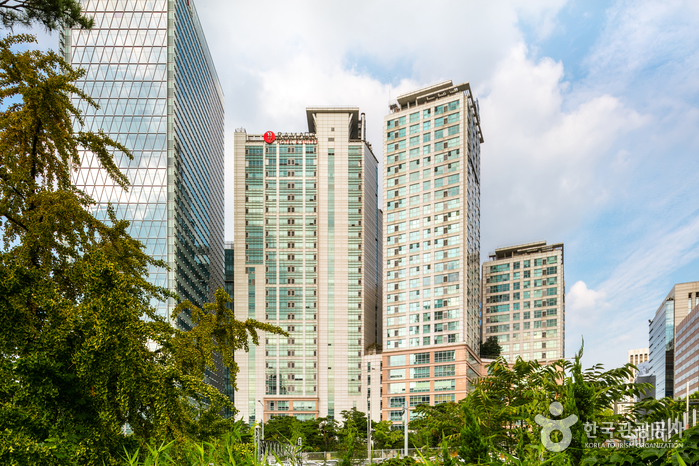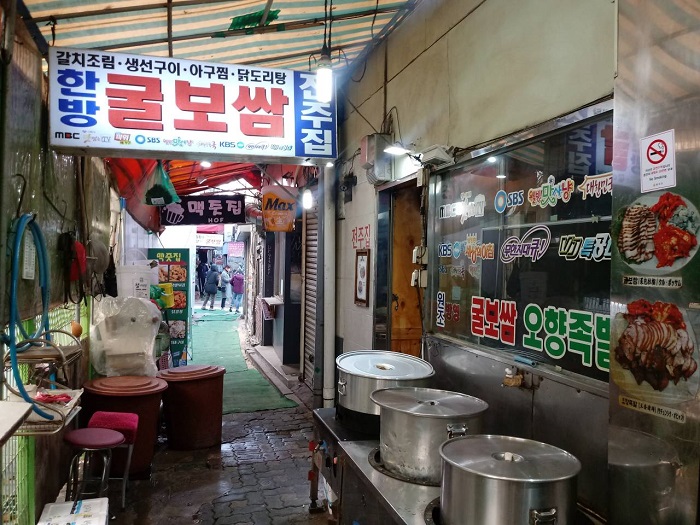Lemiel Plastic Surgery [Tax Refund Shop] (르미엘성형외과의원)
1.9Km 2024-06-27
120, Jong-ro, Jongno-gu, Seoul
-
Le Miel Plastic Surgery (르미엘성형외과의원)
1.9Km 2025-10-23
3rd Floor, 120 Jongno, Jongno-gu, Seoul
Valuable Beauty, Lemiel Plastic Surgery
A premium clinic where delicate technique and artistic sensibility come together. We provide not just external changes, but customized treatments that enhance each individual’s natural charm. Specialized in fast-recovery eyebag surgery using Encore Laser, customized eye surgery for facial balance, tailored lifting based on body type, and petite procedures that refine facial curves and volume.
8 Seconds - Myeong-dong Branch [Tax Refund Shop] (에잇세컨즈 명동점)
1.9Km 2024-04-22
32, Myeongdong-gil, Jung-gu, Seoul
-
Jinsadaek (진사댁)
1.9Km 2024-03-15
30-1 Myeongdong-gil, Jung-gu, Seoul
+82-2-774-9605
Jinsadaek is a traditional Korean restaurant located near Myeongdong Cathedral. It specializes in serving high-end Korean table d'hote prepared with ingredients such as beef, abalone, fish, soybean paste, blue crabs, and japchae. Additionally, they offer specialties like bori gulbi jeongsik (barley-aged dried yellow croaker set menu), ganjang gejang jeongsik (soy sauce marinated crab set menu).
Ramada Hotel & Suites by Wyndham Seoul Namdaemun (라마다 호텔앤스위트 서울남대문)
1.9Km 2024-12-23
27 , Chilpae-ro, Jung-gu, Seoul
+82-2-775-7000
Ramada Hotel and Suites Namdaemun in Jung-gu, in the heart of Seoul,is famousd of for foreigner tourists and vacationers. Transport is convenient, with Seoul Station and City Hall Subway Station close by. Major Seoul tourist attractions such as Namdaemun Market, Myeong-dong, Gwanghwamun, and Deoksugung Palace are easily reachable on foot. A range of room types are offered, and additional facilities include a business center, restaurants, cafes, and an underground shopping mall. Dogs are allowed in rooms, but an extra cleaning fee is payable.
Jeonjujip (전주집)
1.9Km 2024-10-15
16-15 Supyo-ro, 20-gil, Jongno-gu, Seoul
+82-2-2278-3311
A store featured several times in Korean gourmet programs. This Korean dishes restaurant is located in Jongno-gu, Seoul. The most famous menu is kimchi cabbage wraps with pork and oysters.
Olive Young - Myeong-dong Main Branch [Tax Refund Shop] (올리브영 명동본점)
1.9Km 2024-04-23
53, Myeongdong-gil, Jung-gu, Seoul
-
Olive Young - Myeongdong Town Branch [Tax Refund Shop] (올리브영 명동 타운)
1.9Km 2024-06-26
1F~2F, 53, Myeongdong-gil, Jung-gu, Seoul
-
Lens Town - Myeong-dong Jungang Branch [Tax Refund Shop] (렌즈타운 명동중앙점)
1.9Km 2024-04-22
1F, 49, Myeongdong-gil, Jung-gu, Seoul
-

![Lemiel Plastic Surgery [Tax Refund Shop] (르미엘성형외과의원)](http://tong.visitkorea.or.kr/cms/resource/51/3313151_image2_1.jpg)
![8 Seconds - Myeong-dong Branch [Tax Refund Shop] (에잇세컨즈 명동점)](http://tong.visitkorea.or.kr/cms/resource/41/2878641_image2_1.jpg)



![Olive Young - Myeong-dong Main Branch [Tax Refund Shop] (올리브영 명동본점)](http://tong.visitkorea.or.kr/cms/resource/81/2888381_image2_1.jpg)
![Lens Town - Myeong-dong Jungang Branch [Tax Refund Shop] (렌즈타운 명동중앙점)](http://tong.visitkorea.or.kr/cms/resource/23/2887923_image2_1.jpg)
 English
English
 한국어
한국어 日本語
日本語 中文(简体)
中文(简体) Deutsch
Deutsch Français
Français Español
Español Русский
Русский